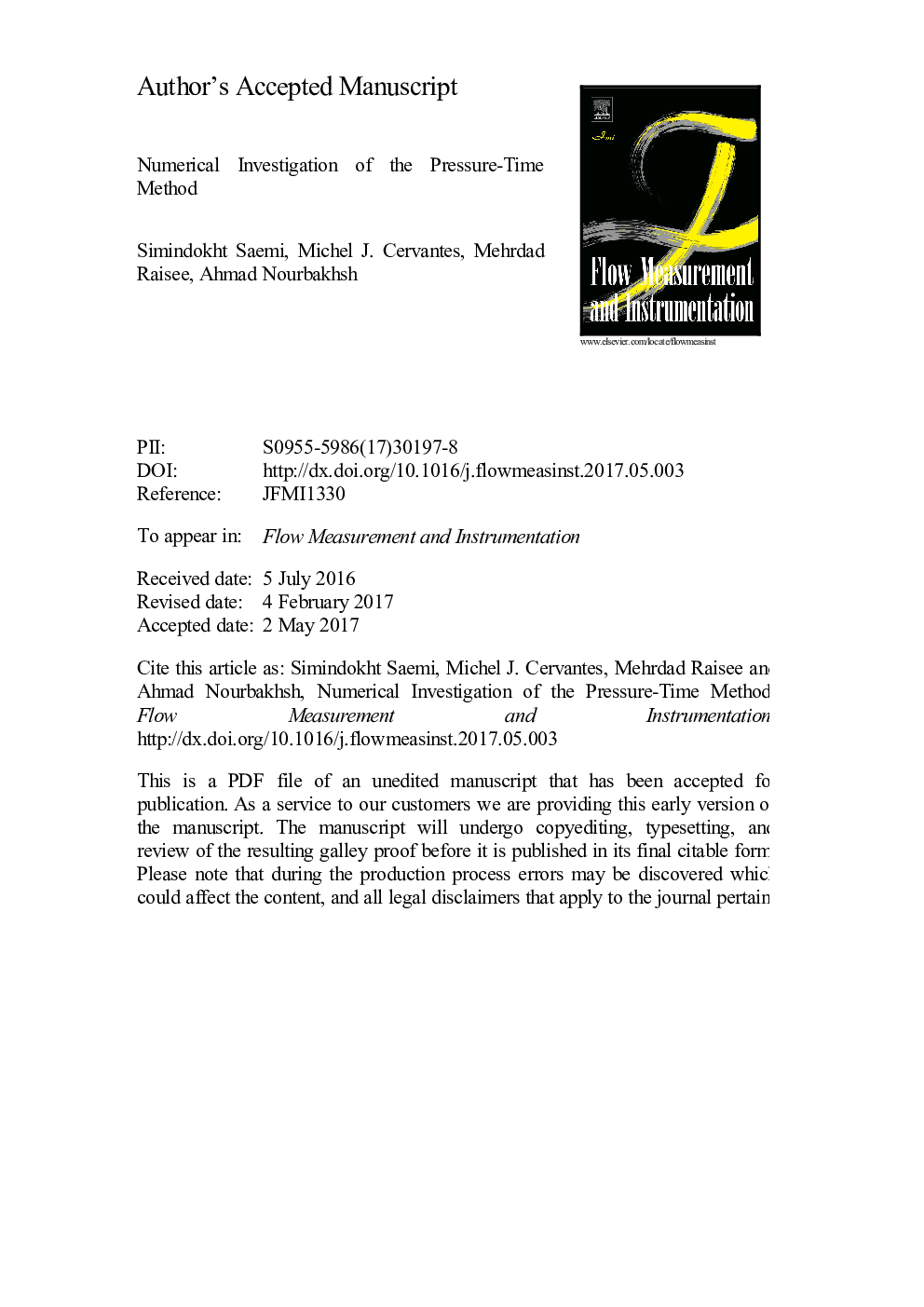| کد مقاله | کد نشریه | سال انتشار | مقاله انگلیسی | نسخه تمام متن |
|---|---|---|---|---|
| 5001802 | 1461084 | 2017 | 45 صفحه PDF | دانلود رایگان |
عنوان انگلیسی مقاله ISI
Numerical investigation of the pressure-time method
ترجمه فارسی عنوان
بررسی عددی روش فشار زمان
دانلود مقاله + سفارش ترجمه
دانلود مقاله ISI انگلیسی
رایگان برای ایرانیان
کلمات کلیدی
موضوعات مرتبط
مهندسی و علوم پایه
سایر رشته های مهندسی
کنترل و سیستم های مهندسی
چکیده انگلیسی
The pressure-time method is a discharge measurement technique commonly used to estimate the flow rate in hydro-power plants to assess the turbine hydraulic efficiency. In this paper two-dimensional Reynolds-averaged Navier-Stokes equations with the low-Reynolds k-Ï SST turbulence model are used to model and evaluate the pressure-time method. The flow rate decrease is modeled by valve closure and use of the dynamic mesh technique. The results are compared with experimental data showing the close trend. Moreover, the affecting parameters in the pressure-time method including compressibility, calculation of the losses and finding the upper time limit of integration of the pressure-time diagram are studied in detail. Furthermore, the flow characteristics with both compressible and incompressible assumptions are investigated. The obtained results demonstrated the compressibility effect even before the complete valve closure. The physics of the flow, in the closed conduit in the pressure-time method, before the complete valve closure is studied based on the time variation of the wall shear stress and the γ parameter. The γ parameter represents the difference between the turbulence structure in a transient accelerating or decelerating flow and the one in the quasi-steady condition. It is demonstrated that for the pressure-time method, some part of the flow decrease excursion can be characterized as quasi-steady and the rest is unsteady. The dominance of inertia and turbulence dynamics is investigated to evaluate the wall shear stress in the part of the excursion with the unsteady assumption. It is found that the inertia has a dominant effect during the excursion. The flow rate is calculated by evaluating all the terms of losses, e.g., wall shear stress, normal stresses, Reynolds stresses and density variation. Based on the relative magnitude of each term the results indicate that the wall shear stress is a good approximation of the losses for the flow rate calculation and the other terms can be neglected. Due to the primary role of losses in the flow rate calculation other methods in losses calculation are also considered for comparison (e.g., quasi-steady friction or constant friction factor). The available methods to find the upper time limit of the flow rate approximation integral still have significant errors. The flow rate reduction is calculated at each time step before complete valve closure using CFD methods.
ناشر
Database: Elsevier - ScienceDirect (ساینس دایرکت)
Journal: Flow Measurement and Instrumentation - Volume 55, June 2017, Pages 44-58
Journal: Flow Measurement and Instrumentation - Volume 55, June 2017, Pages 44-58
نویسندگان
Simindokht Saemi, Michel J. Cervantes, Mehrdad Raisee, Ahmad Nourbakhsh,
